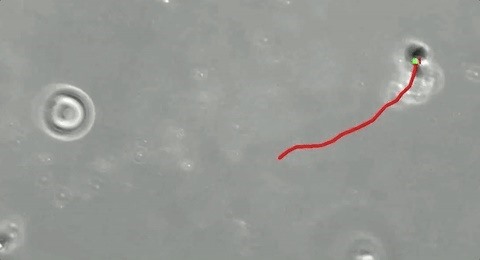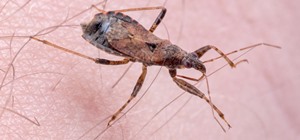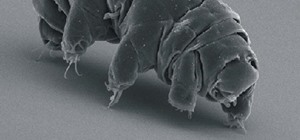Look no further than Flint, Michigan, to discover the serious consequences of contaminated drinking water. Around the world, water polluted by pathogens and toxins sickens people or cuts them off from safe drinking water. Looking for a solution, researchers created tiny, swimming robots that pack a powerful punch against waterborne pathogens.
In Flint, poor water treatment exposed more than 100,000 people to toxins that threatened the health of adults and children. Trying to save money, state officials placed the health of constituents at risk of lead leaching from old water pipes. While poor agency decisions caused the disaster, microbes and contaminants make water unsafe to drink the world over.
Clean drinking water is a requirement for healthy human life. Microorganisms transmitted in water cost countless lives. Cholera, an infectious disease caused by a bacterium, remains a killer due to the lack of safe drinking supplies in Third World countries. Another pathogen, Escherichia coli, or E. coli, can cause serious illness when transmitted through contaminated drinking or recreational water.
A study from the Max-Planck Institute for Intelligent Systems, in Germany, published in the American Chemical Society journal of Applied Materials and Interfaces, highlights a new approach to the problem of water contaminated by E. coli. Their answer? Swimming microbots.
Sometimes Being Two-Faced Is a Good Thing
Pathogens are becoming resistant to disinfectants as well as antibiotics used by humans. To meet the common challenge of water contaminated with E.coli, the study team created what they call "Janus microbots," to collect and kill E. coli while they swim through contaminated water.
"Janus" is a deity from Roman mythology. Associated with time, beginnings and endings, and before and after, Janus is always depicted with two faces. This original definition of being "two-faced," aptly describes their new microscopic water-cleaners. The surface of the round bot is divided in two, with different substances on each half to enable its functions.
The magnesium built into one side of the sphere produces hydrogen bubbles in water. The bubbles propel the bot through the water, giving it the capability to swim. The Janus microbot also has an inside layer of iron that allows scientists to manipulate the bot's direction from afar — and to collect the microbot after it disinfects the water.

Gold and silver nanoparticles coat the outside of the sphere, which works to collect and kill bacteria like E. coli. The microbot zooms around in the water, picking up pathogens which are captured and then killed on contact.
How does that work? Check it out in this video, from the American Chemical Society:
In tests, the microbots removed about 80% of E. coli in the water, in about 15 minutes. The researchers who developed the bots suggest that greater numbers of bots could offer better disinfection — and getting them out of the water is a snap — just use a magnet.
Micromotors, tiny, self-propelled motors, are getting a lot of attention for a variety of applications. Producing their energy by converting chemicals, micromotors can be used to clean water, decompose or degrade organic pollutants, or capture heavy metals, like lead. It's important that micromotors like the Janus microbot do not create pollution while cleaning up pathogens. The Janus microbot leaves no residue, no antibacterial resistance, or little bots lingering in your drinking glass.

At nanoparticle size, both silver and gold have a known anti-bacterial effect. Microbes stick to the gold and silver and are effectively captured and killed by their encounter with the minerals. On board a Janus micromotor, they combine to clean the water as the magnesium converts to hydrogen bubbles that propel the microswimmer. Optimum water conditions for the microbot is a relatively low salt content with a pH of about 6.
When the hydrogen is exhausted, the bot is called back using a magnetic field, and the bacteria on their surface go with it. By utilizing bio-friendly compounds to remove pathogens from water, the Janus microbot was found in this study to be an effective, safe, environmental remediation system.

How else can these microswimmers be of help? At present, combinations of chemicals and disinfectants are used to kill microbes swimming by in drinking and recreational water. But the combination of chemicals — and the compounds themselves — can be harmful to humans and other organisms. The common practice of using chlorine to disinfect swimming pools, for example, can cause allergic reactions and doesn't kill all bacteria and viruses. Reusable microbots may come to the rescue from pool-borne pathogens.
And someday, micromotors like the Janus bot could be deployed to provide clean water for a village — or even a city like Flint, Michigan.
Just updated your iPhone? You'll find new emoji, enhanced security, podcast transcripts, Apple Cash virtual numbers, and other useful features. There are even new additions hidden within Safari. Find out what's new and changed on your iPhone with the iOS 17.4 update.



























Be the First to Comment
Share Your Thoughts